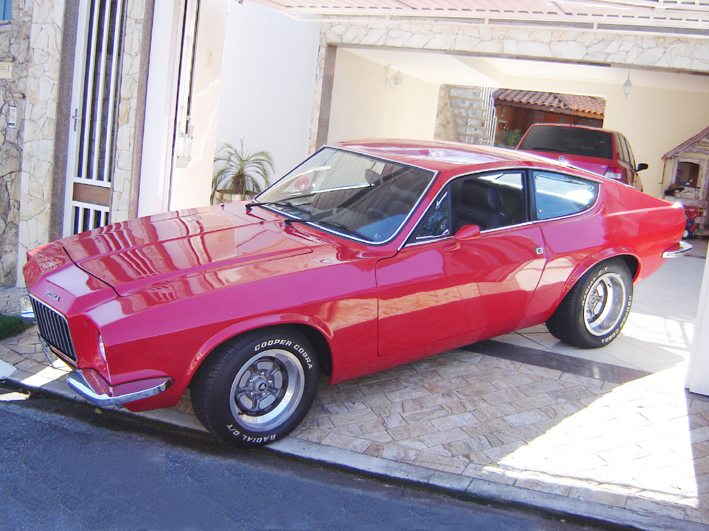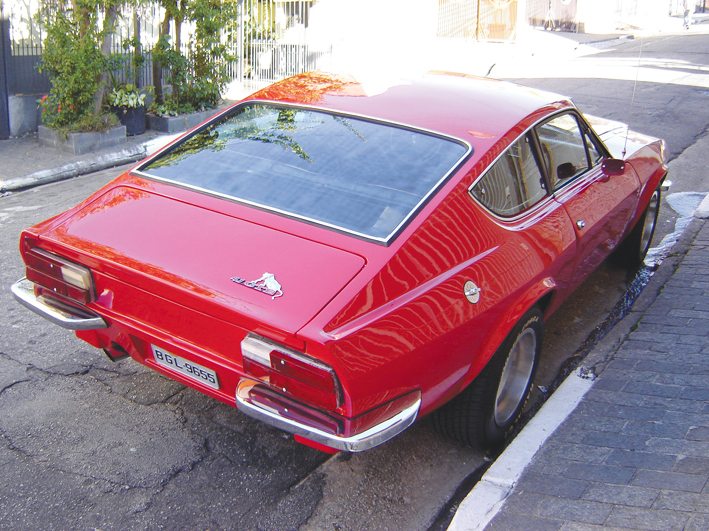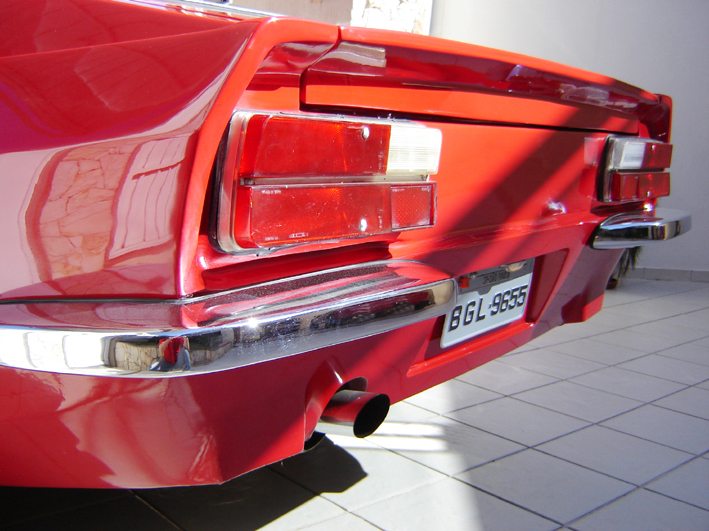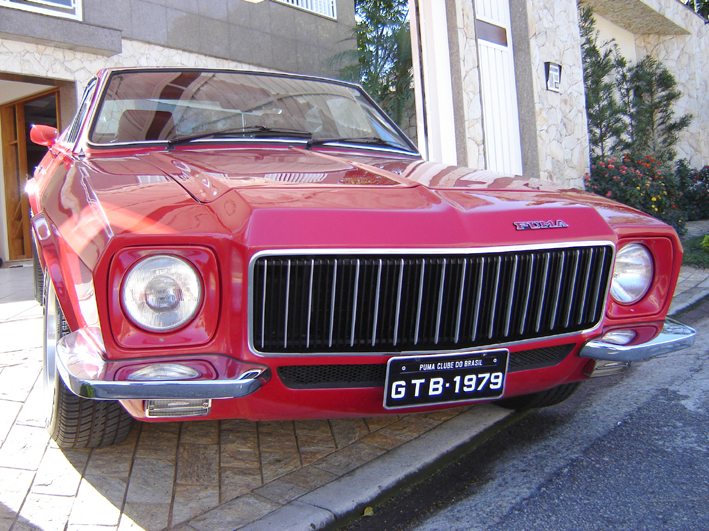1976→1979 Puma GTB S1
The Puma GTB was a front engine, rear wheel drive touring car based on Brazilian GM (Opala) components. In late 1971 the “Pequena Atrevida” (portuguese for “Little Cheeky”) was known as PUMA Vehicles and Engines, again shook the Brazilian market Cars, has begun testing a new prototype designed by Rino Malzoni that was initially named P8, this “new” prototype was known at the time as PUMA GTO or PUMA Opala, in the testing phase the new car ran more than 50,000 km and with an engine CHEVROLET 6 cylinder in-line 3.800cc was being awaited by lovers of speed, there is no news of this first prototype that probably have been totally redone, with the same Chevrolet engine, but with 4100 cc and was presented at the Motor Show in 1972 still under the name PUMA GTO (GTO: Gran Turismo Omologato – Acronym widely used by Pontiac and Ferrari), the new model drew the attention of the public who approved the outlines of the new sports typically inspired by the U.S. sports. In this Motor Show PUMA Vehicles & Motors received about 300 orders for the new model that only came into regular production only in 1974 already dubbed PUMA GTB (Gran Turismo Brazil), its initial production was 10 units per month.
Curiously, in May 1974, was already a prototype point of pick-up GTB, which, however, was never built in series and also do not know the whereabouts of this prototype.
PUMA GTB was a beautiful and impressive sports car, who had queued to buy, because the military government increasingly strangled the entry of imported sports on Brazil. An even larger number of applications were made and thus there was one interesting phenomenon: The PUMAS GTB’s already produced were sold in the market for used cars at prices far higher than those charged by the factory, because these units had no waiting list of more than 1 year, it proves that the problem of PUMA Vehicles & Motors was not to sell their cars but produce them.
The body of the PUMA GTB was also made of plastic and fiber-glass, with a very long fornt and a short rear, metallic colors like silver and gold, were the favorites. Green glasses, sports seats and steering wheel were part of series items.
As the smaller brother, the Puma GTB was ideal for two people – the space of the rear seat could be used only for short journeys. The instrument panel was very complete and includes tachometer, voltmeter and oil thermometer. Came equipped with the PUMA’s unique wheels and unprecedented tires in the domestic market, the Pirelli E70
The performance of PUMA GTB was not much higher than those of Opala, Dodge Dart and Charger of the season. – And these were cheaper than him. Moreover, the Puma GTB just cost less than the Ford Landau, the most expensive car produced in Brazil at the time. A year after its launch would come a serious competitor for PUMA GTB was the Ford Maverick GT. The maximum speed of PUMA GTB was 170 km/h and it could go from 0 to 100 km/h in 12.5 seconds. The only changes would be sustained until 1978 were on the grill, the back optical set, the location of the back plate, and badges on the engine, which would pass to the 250-S, with mechanical lifters instead of hydraulic and power of 171 hp, enough for the 190km/h .
Story by GTB Owners Club – PumaGTB.com.br
In Detail
| submitted by | hydrenxz |
| type | Series Production Car |
| production years | 1976 – 1979 |
| released at | 1973 São Paulo Motor Show |
| built at | Brazil, Other |
| body stylist | Rino Malzoni |
| interior designer | Rino Malzoni |
| production | 701 |
| engine | Inline-6 |
| position | Longitudinal |
| aspiration | Natural Aspirated |
| valvetrain | OHV |
| fuel feed | Double-body carburetor |
| displacement | 4093 cc / 249.77 in³ |
| compression | 7.8000002:1 |
| engine designer | Roberto B. Beccardi |
| power | 125.3 kw / 168 bhp |
| torque | 318.72 nm / 235.10001 ft lbs |
| body / frame | fiberglass |
| driven wheels | RWD |
| front tires | 205/70 R 14 |
| rear tires | 215/70 R 14 |
| f suspension | Independent |
| r suspension | hard axis with semi-elliptical springs |
| curb weight | 1216.27 kg / 2679 lbs |
| length | 4300.2002 mm / 169.3 in |
| width | 1739.9 mm / 68.5 in |
| height | 1259.8 mm / 49.599998 in |
| transmission | 4-Speed Manual |
| top speed | ~193.08 kph / 120 mph |
| 0 – 60 mph | ~12.5 seconds |







